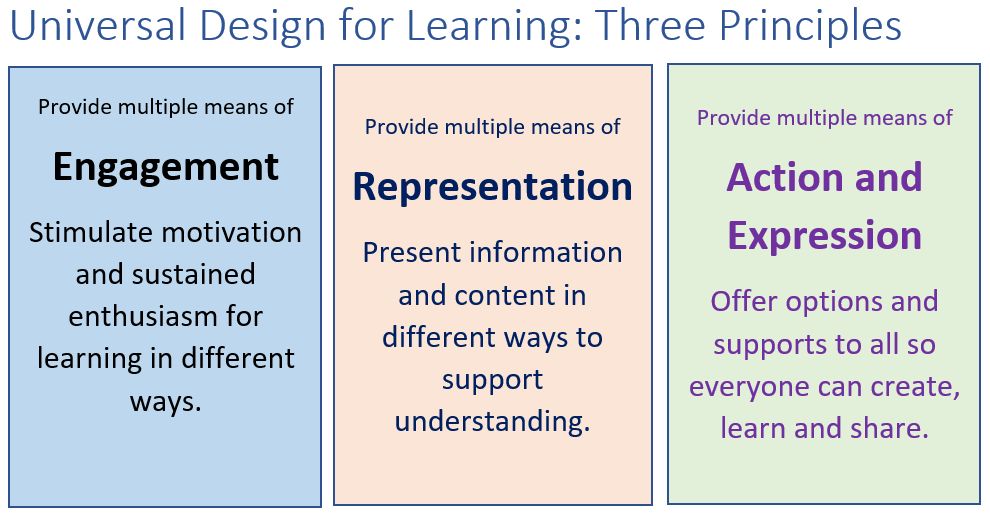
May 25, 2023, by Helen Whitehead
Implementing UDL 2: Multiple means of Representation
If you’ve read any of our previous blog posts on Universal Design for Learning (UDL) or encountered it somewhere else, then you’ll know there are three main principles of the UDL Framework, developed by CAST. Each UDL principle is designed to help academics and others involved in teaching to improve how we present information, engage students and create inclusive assessment.
Multiple means of Engagement (the WHY of learning) asks: are learners challenged, interested and motivated about what they are learning?
Multiple means of Representation (the WHAT of learning) asks: is material and content (visual and auditory) presented in a variety of ways?
Multiple means of Action & Expression (the HOW of learning) asks: can learners express their comprehension and knowledge in multiple ways?
I’ve been collecting some ideas about what these principles could and do look like in our practice at the University.
The second principle we’ll look at is about multiple means of representation: providing learning materials and learning content in a variety of ways. For example, in my attempts to engage students, I used a lot of forums until they fed back to me that the lack of variety in these courses was just as demotivating as the lack of variety in a course with no engagement that’s just lectures, videos and quizzes.
What can we do?
Incorporate different pedagogical approaches and technologies that facilitate class communication and participation. Some of the possibile tools and activities to do this include:
- Discussion forums.
- Reflective activities.
- Audience response tools.
Incorporate technologies that facilitate communication and participation.
- Use Moodle’s collaborative tools such as forums and wikis.
- Use Teams occasionally even if it’s predominantly a face-to-face class: students can respond differently in different learning spaces.
Present information in multiple forms:
- Moodle & Teams.
- Video and podcasts.
- Interactive learning objects, e.g., Xerte Toolkits.
- Flipped classroom.
- Provide graphic organisers and templates.
Ensure alternative and accessible formats:
- Accessible PowerPoints and documents.
- Videos with captions.
- Alternatives to visual information.
Break up the materials, provide variety:
- Chunk up video lectures and intersperse with Moodle activities.
- Provide activities on Moodle before and/or after lectures or seminars.
Previous post in this series:
Implementing UDL 1: Multiple means of Engagement
No comments yet, fill out a comment to be the first

Leave a Reply